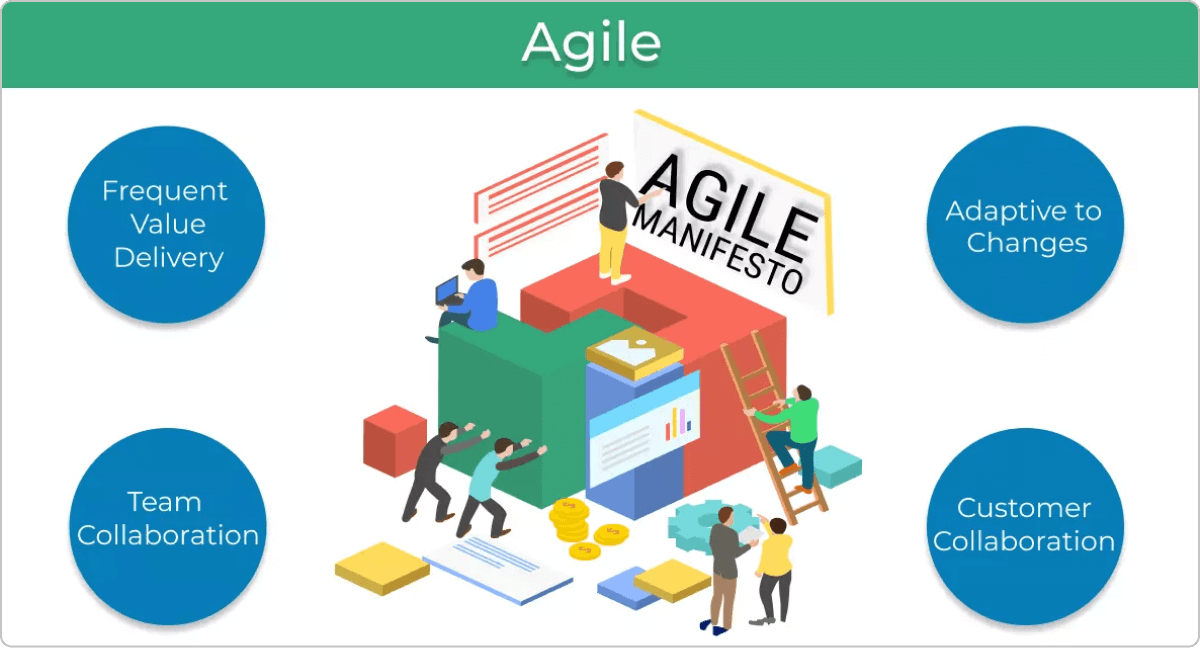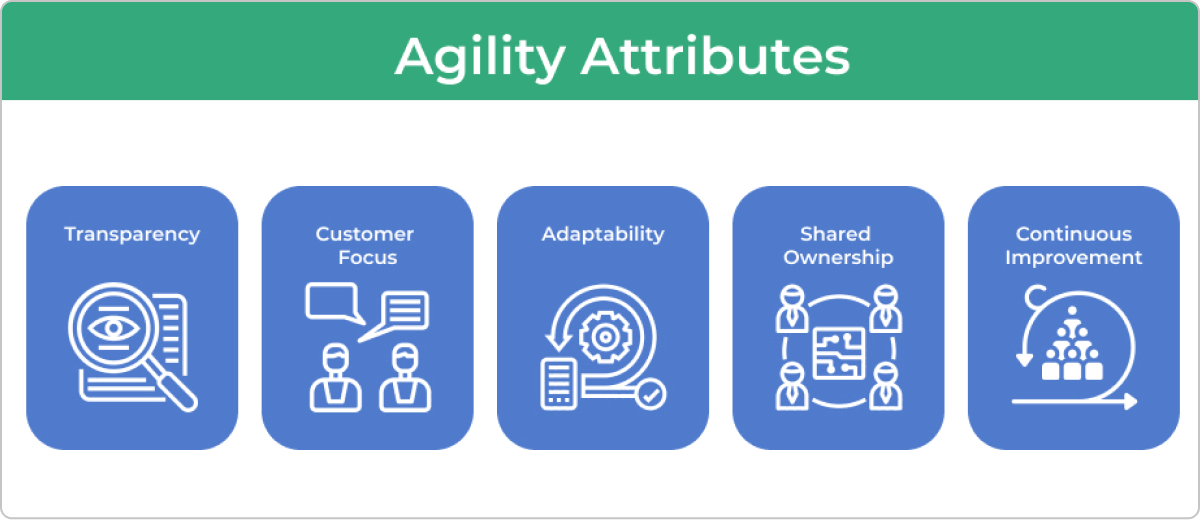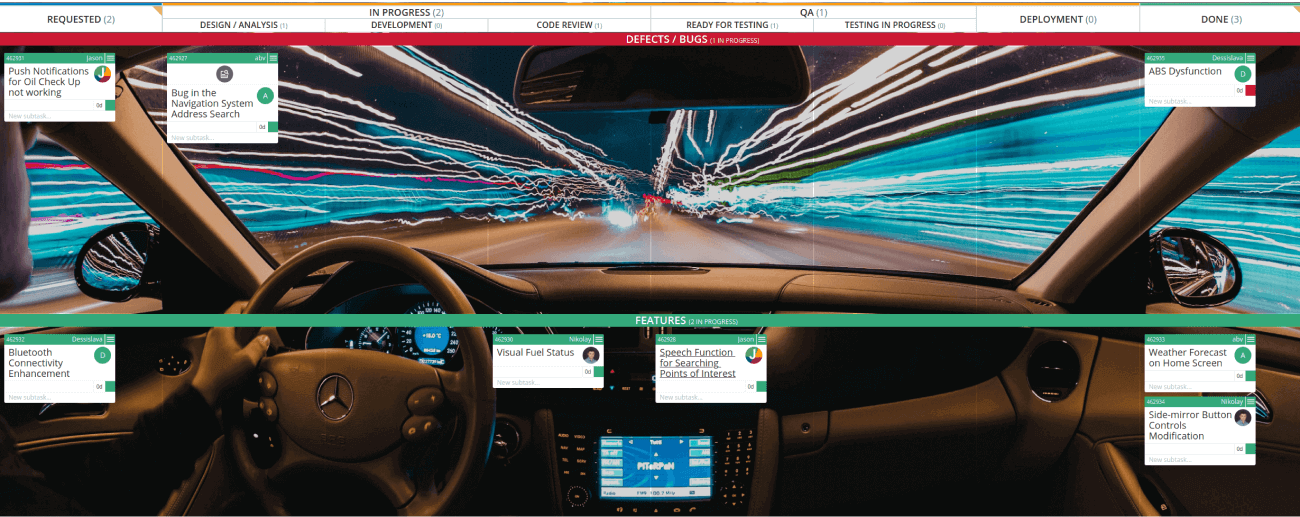As in many other sectors, technology is causing massive market disruption in the automotive industry. Nowadays, in-vehicle connectivity, autonomous driving, electric cars, and car-sharing are transforming the sole definition of a vehicle.
While the determining factor for car purchase used to be the driving experience, today, people no longer see cars only as a mode of travel. Consumers view vehicles increasingly as "smartphones on wheels", and the in-vehicle experience is now the major factor influencing purchase decisions. The modern car is expected to be autonomous, electrified, eco-friendly, connected, and offer services like networked parking, over-the-air-updates, and cybersecurity.
Original Equipment Manufacturers (OEMs) face a series of challenges in this new and dynamic market situation. The fast-changing consumer demands are putting automotive companies under increasing pressure to innovate faster.
Automotive companies need to shorten the production cycle to ensure their innovations are still up-to-date when the new model reaches the market. The ability to continuously learn and adapt to changes quickly is becoming critical for automotive companies' survival.
How can Agile help Automotive Companies?
Compared to traditional waterfall-based approaches, the Agile way is highly iterative and encourages delivery in smaller batches. The main focus lies in the frequent delivery of customer value and a quicker response to changing conditions. So, in the new era of car manufacturing, it is no wonder we are witnessing Agile's application in the automotive industry more and more often.

Better Products Through Customer Collaboration and Faster Feedback Loops
Customers are expecting more from their vehicles than ever before. From comfort to performance to connectivity - automotive companies must make sure they are understanding correctly what potential buyers find valuable and what drives their purchase decision.
To put Agile in the picture - some of the main principles of the approach put forward customer collaboration and faster feedback loops. Agile companies continuously engage with their customers to gather feedback early in the process and to recognize changing market forces as they emerge. Further on, they use prototypes and MVPs to validate assumptions about how the product can meet customer needs.
An excellent example to illustrate the importance of customer collaboration during product development is this quote from Anne Sandberg, Head of Continuous Improvement & Change at Product Creation, Volvo Cars:
“(...) When we were developing the speech functions in the car, we found that we had installed functions that people didn’t use as expected. That was partly embarrassing and partly very educational for us. We saw that we had to change our development approach.”
Collecting such learning during the product development cycle allows faster product improvements and results in increased product quality.
Decrease Time to Market and Handle Complexity Through Cross-Functional Teams
A cross-functional team is a group of people with different functional expertise, collaborating towards a common goal. What we typically see in traditional work structures is the separate siloes competing for resources. There are also a lot of hand-offs, miscommunication, and eventually delays.
Contrary to that, introducing a cross-functional team structure stimulates collaboration between the team members with different expertise, reduces the number of hand-offs, and enhances communication. Further on, the diverse groups are also more flexible, enabling them to share knowledge and solve problems faster. Focused on how to best use the available resources together, cross-functional teams automatically decrease the time to market of their products.
An example from the practices shows that reorganizing employees into product-focused, Agile teams can accelerate development cycles by 40% and improve engineering and capital efficiency by 25%.
Another benefit of cross-functional teams is better coordination across functional areas. With vehicles becoming a complex mix between AI, mechanics, software, and cutting-edge design, having different functional areas collaborating with each is an effective way to manage complexity. Bringing diverse expertise together also opens the doors for innovation and better utilization of already developed functionalities, ensuring further competitive advantages.
Agile Project Management in R&D departments
Driven by customer desire for a high-level in-vehicle experience, automotive companies shift their focus from a hardware-driven product to more software-driven vehicles. Predictions show that software will account for over 30% of the total vehicle content by the beginning of the next decade compared to only about 10% today.
Logically, this means a lot of new software in a short period.
To achieve this, car producers will also need to transform their R&D operations and leave the highly structured way of working in favor of Agile project management. With Agile, the project delivery will include iterations, combined with close and frequent customer collaboration.

An effective method for Agile project management in R&D departments is Kanban. Famous for its visual character, Kanban is an evolutionary process focused on incremental changes on the path to agility. The teams visualize their project workflow and work items on Kanban boards to ensure a high level of transparency and alignment. By segmenting the boards to match their specific workflow, teams also unhide bottlenecks and easily discover weak spots in the work process. Optimizing those allows them to increase their efficiency and operational capacity.

Additionally, Agile project management is highly focused on continuous improvement. By integrating feedback loops, Agile teams can reflect on what they have produced so far and seek ways to improve collaboratively. As a result, they can quickly refine their product.
All this will enable automotive R&D departments to reduce project risk and increase the likelihood of meeting customer's expectations.
What to Watch Out For on The Path to Agility
The automotive industry is a very traditional industry that has been cultivating a sequential product development approach for the past 100 years. To move away from that will be one of the biggest challenges on the path to agility car companies will face.
Next to that, the industry is defined by strict calendar cycles and long supply-chains, that the new methods will have to find a way to respect. However, there are already numerous examples that applying Agile in the automotive industry can do miracles, so it should not be a question of "if" to adopt Agile, but "how".
Before jumping to restructuring and transforming current ways of working, an important step is to evaluate the company's current state. The goal should be to identify business challenges and look for the root causes of inefficient processes. These insights can then be used to set priorities and goals for the Agile transformation. Without alignment around the objectives of the transformation, any results are doomed to look unsatisfying.
Typically, Agile movements tend to be bottom-up directed. However, the support of the company leaders is crucial for scaling Agile across the organization. Without a substantial buy-in from the top management, the new working methods will be either short-lived or will stay isolated in individual departments.
How to manage the transformation is also a crucial strategic decision. Organizations with less Agile experience should go stepwise and "by the book" at first. A few pilots in individual units can achieve quick wins and showcase the approach's benefits, creating excitement around its implementation.
Once a certain level of maturity is reached, embarking on a full Agile transformation becomes much easier.
Further Reading: The founder of Stellar Work GmbH provides a behind-the-scenes perspective on agility in the automotive industry, offering key insights into industry challenges and the stages of Agile Evolution in enhancing Customer Experience.
In Summary
Automotive is yet another industry that is completely changing under the influence of technological innovation. Customers increasingly see their vehicles as smartphones on wheels and continuously demand new features and upgrades. The new dynamic in the car market also calls for a new way of working.
Applying Agile methods helps automotive manufacturers stay on top of their market and:
- Build products based on market demands through more frequent customer collaboration alongside the project's life cycle.
- Increase product quality through faster feedback loops and an iterative product development approach
- Handle complexity through cross-collaboration teams
- Decrease time to market by reducing hand-offs, boosting collaboration and increasing the overall operational capacity of the teams










